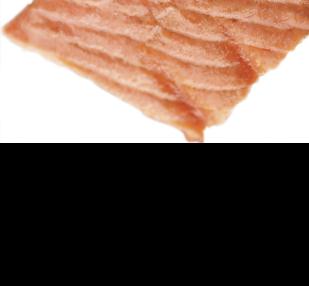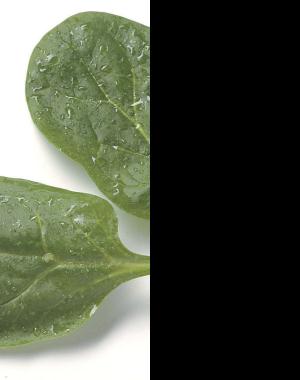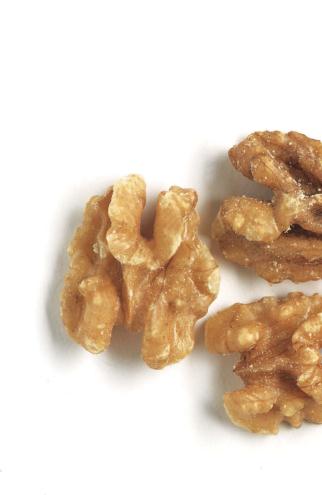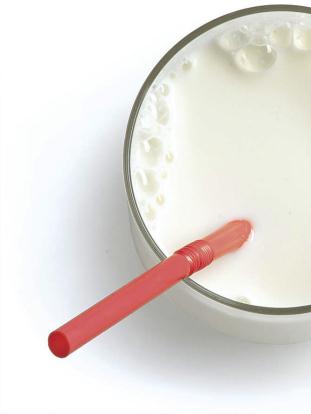Basic HTML Version









Tomatoes
Is it a fruit? Is it a vegetable? Brimming
with vitamins C, E and A, as well as
iron, a tomato is good for you no
matter how you slice it.
If fresh tomatoes aren’t for you,
cooked tomatoes also offer plenty of
nutrients.
And officially, tomatoes are a
fruit, although they are treated like
vegetables in most Americans’
kitchens.
Beans
Beans have amazing versatility and
variety (pinto, kidney, navy and black,
just to name a few). Nutritionally,
they’re great as a vegetable and as a
source of protein.
A half cup of beans gives you a
third of your recommended daily
value of fiber and as much protein
as 1 ounce of meat—without the
saturated fat. Beans are also a good
source of magnesium, potassium,
folate, iron and zinc.
Fish high in omega-3
fatty acids
Fish with large amounts of omega-3s,
such as salmon, herring and albacore
tuna, are a great source of protein and
vitamin D and are low in saturated fat.
Omega-3s are good for your heart
and help lower triglycerides (a type of
blood fat).
Aim to eat 6 to 9 ounces of fish per
week. Avoid breaded and deep-fat fried
fish. Instead, bake or grill fish and season
it with herbs and lemon juice—not salt.
Citrus fruits
Whether you prefer oranges,
grapefruits, tangerines, lemons or
limes, your favorite citrus delivers a
sweet-tart kick with a healthy punch.
You know them for their vitamin
C, but these fruits have even more
to offer. Oranges, for example,
contain folate, calcium, potassium,
thiamin, niacin, magnesium and fiber.
Remember: The fiber is in the whole
fruit, not the juice.
Dark green,
leafy vegetables
According to the ADA, you can’t eat
too many dark green, leafy foods, such
as spinach, bok choy, broccoli, kale,
chard and greens (including mustard,
collard, turnip and dandelion greens).
In general, the darker the green, the
better it is for you.
Greens are low in calories and
carbohydrates. But that doesn’t mean
they’re wimpy. These veggies are high
in vitamins A and C, calcium, and iron.
Sweet potatoes
The Centers for Disease Control and
Prevention ranks sweet potatoes
among the most nutritious vegetables
available. Sometimes miscalled yams,
sweet potatoes aren’t true yams, which
are larger, less nutritious roots that are
rarely found in the grocery store.
Sweet potatoes are packed with
fiber and vitamins A and C. They
also have small amounts of calcium
and iron. Try them in place of regular
potatoes.
Nuts
Walnuts, peanuts, almonds and
pecans—pick your favorites and enjoy
them in a variety of ways. They are
packed with protein and are also high
in folate, niacin, fiber, magnesium,
selenium, zinc and unsaturated fats (the
healthy kind).
A handful of nuts makes a healthful
snack that may reduce your risk of heart
disease and some forms of cancer. But
don’t overdo it—they are high in fat
and calories.
Berries
Strawberries, blackberries, raspberries,
blueberries—there’s a mouthwatering
array to choose from. And all of them
are packed with antioxidants, vitamins,
potassium and fiber.
Look for in-season berries—they
taste the best and are more affordable
than out-of-season fruit. You can also
buy them frozen.
The best thing about berries:
They’re easy. Most can be eaten raw.
Just wash and enjoy.
Fat-free milk
and yogurt
These dairy products are excellent
sources of calcium and potassium and
may also be fortified with vitamin D.
The nonfat versions of milk and
yogurt have the same nutritional value
as the full-fat alternatives—without the
saturated fat.
The U.S. Department of Health
and Human Services recommends
that most adults get 3 cups of milk
products each day.
Whole grains
Rolled oats, pearled barley, whole
wheat and rye are examples of whole
grains—they still have the germ and
bran intact.
By comparison, processed grains,
such as enriched wheat flour, don’t
have these essential parts—which
means they don’t contain the nutrients
you need.
Whole grains are a good source of
fiber, magnesium, chromium, omega-3
fatty acids and folate.
7

